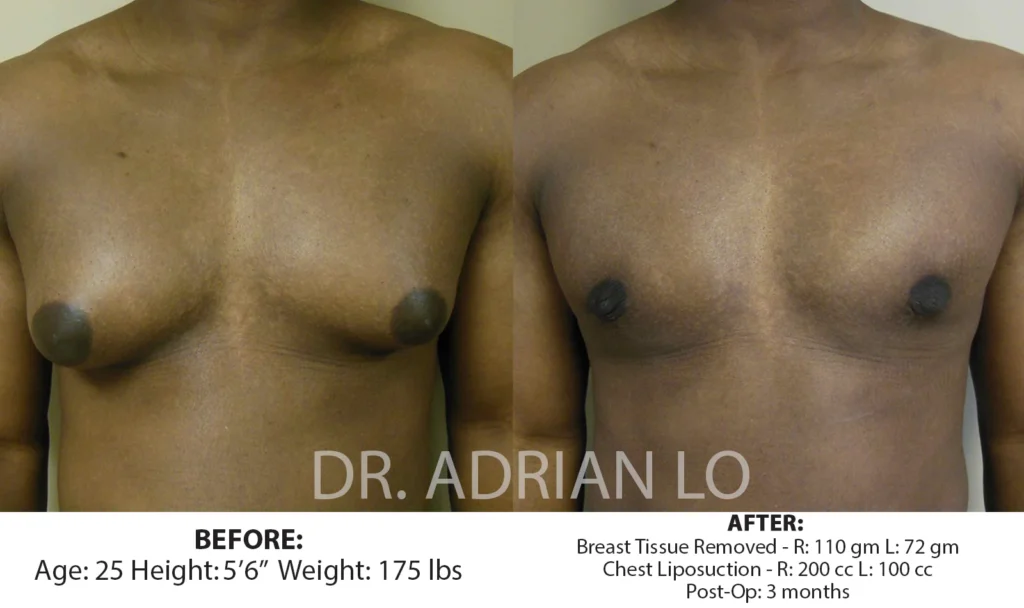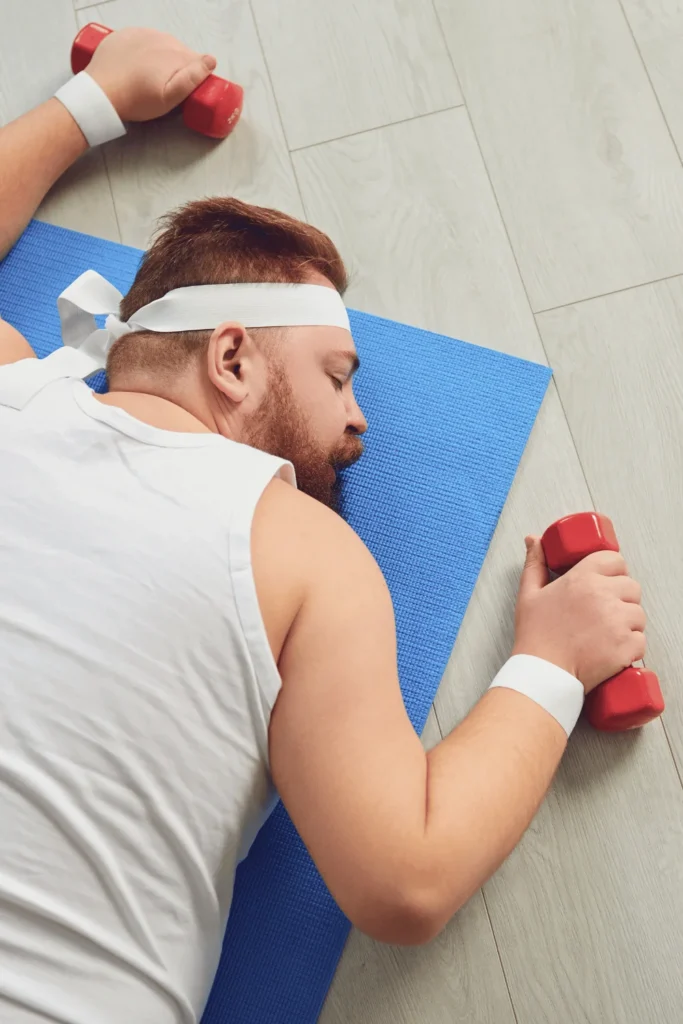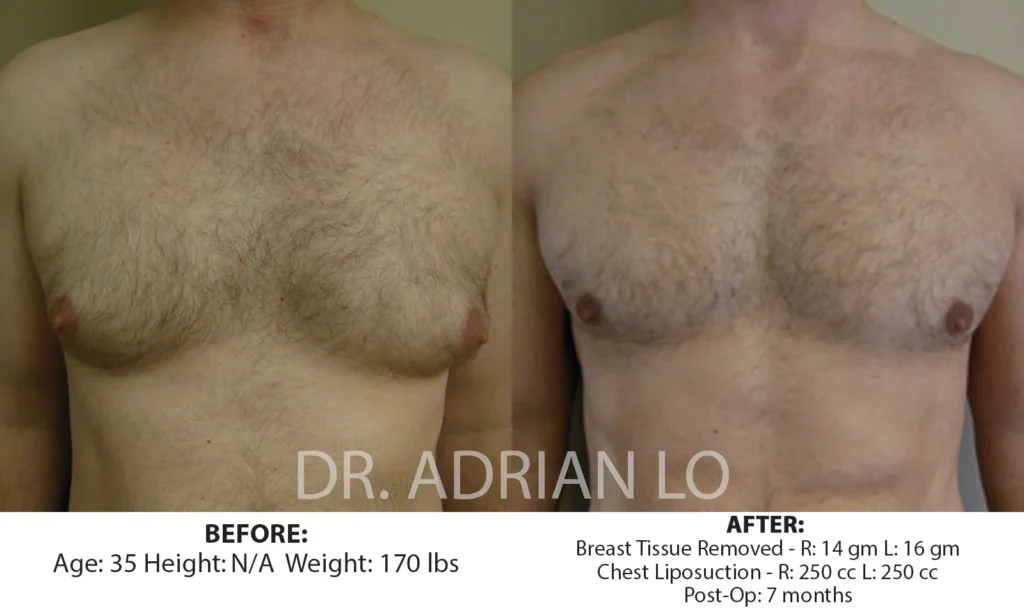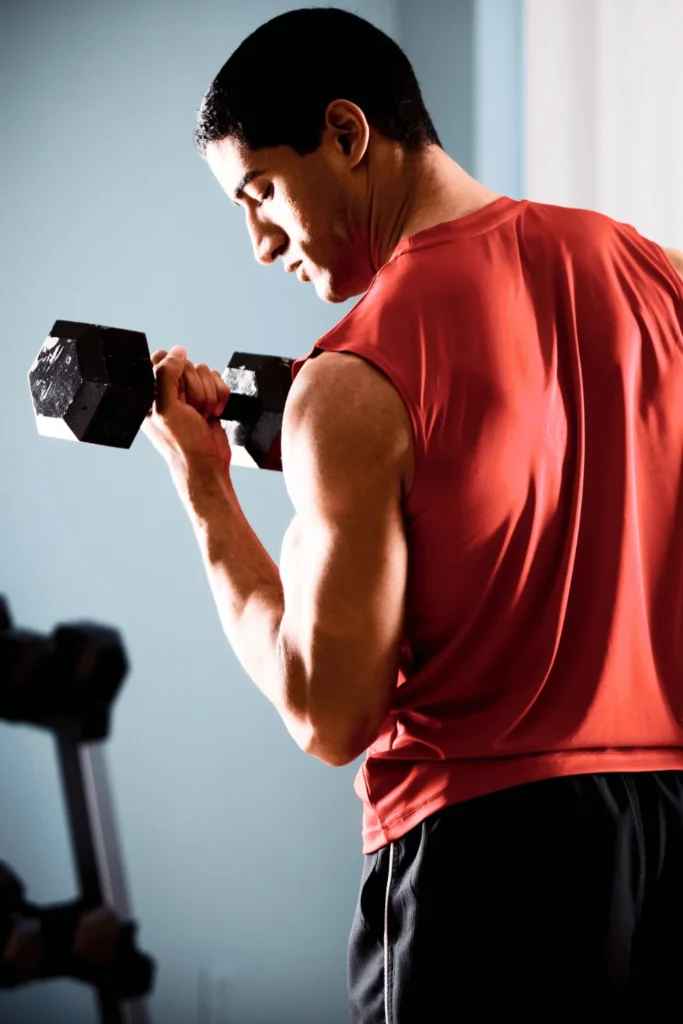Imagine looking in the mirror and seeing a chest that doesn’t reflect your masculine identity. For many men, this isn’t just imagination—it’s reality. But here’s the million-dollar question: can gynecomastia go away with exercise?
The answer isn’t as simple as a yes or no. Gynecomastia is a complex interplay of biology, hormones, and lifestyle factors.
How Does Gynecomastia Happen?

Gynecomastia is the result of complex biological processes. Let’s break down the main factors that contribute to gynecomastia.
Puberty
The teenage years are a hormonal roller coaster, and gynecomastia often comes along for the ride. During puberty, boys experience significant fluctuations in their hormone levels.
Sometimes, this leads to a temporary imbalance where estrogen (typically thought of as a “female” hormone) outpaces testosterone. The resulting hormonal imbalance leads to breast tissue growth in the chest area under the nipple. In some cases, the breast tissue resolves on its own as hormone levels stabilize. However, for many men, the excess breast tissue remains and does not go away.
Aging
As men get older, their bodies undergo another hormonal shift. Testosterone levels naturally decrease with age, while relative estrogen levels may increase. This imbalance can trigger gynecomastia in older men. It’s not uncommon to see male breasts develop in men over 50.
Obesity
Fat tissue contains an enzyme called aromatase, which converts testosterone to estrogen. More body fat means more potential for this conversion, tipping the hormonal balance towards estrogen and potentially leading to breast tissue growth in the chest area.
Medications
Certain medications can inadvertently trigger gynecomastia as a side effect. Common ones include:
- Antidepressants
- Anti-anxiety medications
- Heart medications
- Antibiotics
- Hair growth medications
- Steroids
If you’re taking medication and notice breast tissue growth, it’s worth discussing with your plastic surgeon.
Understanding these causes is crucial because it helps determine whether exercise might be an effective solution. For instance, exercise could potentially help with obesity-related gynecomastia, but it might not be as effective for cases caused by puberty, medication or aging.
How Exercise Affects Body Composition: Can Gynecomastia Go Away with Exercise?

Exercise is a powerful tool for shaping our bodies, but how exactly does it work when it comes to gynecomastia?
Fat Loss
Regular exercise, especially cardio, helps burn calories and reduce overall body fat. This can be particularly beneficial for pseudogynecomastia, where the enlarged breast appearance is primarily due to fat accumulation rather than glandular tissue.
Muscle Building
Strength training exercises, particularly those targeting the chest, can help build muscle mass in the pectoral area. While this doesn’t directly reduce breast tissue, it can help create a more defined chest appearance.
Hormonal Balance
Exercise has been shown to positively influence hormone levels in the body. Regular physical activity can boost testosterone levels and improve insulin sensitivity, which may help address some of the hormonal imbalances associated with gynecomastia.
Metabolism Boost
Both cardio and strength training can increase your metabolic rate, helping you burn more calories even when you’re not actively exercising. This can contribute to overall fat loss, potentially including chest fat.
It’s important to note that while exercise can have these positive effects, its impact on gynecomastia specifically can vary depending on the underlying cause of the condition. Exercise alone may not be sufficient to completely resolve gynecomastia, especially in cases of true glandular gynecomastia.
Can Exercise Alone Cure Gynecomastia?
Now, let’s address our question again: can gynecomastia go away with exercise? It largely depends on the type and cause of gynecomastia you’re dealing with:
True Gynecomastia vs. Pseudogynecomastia
True Gynecomastia
This involves the growth of actual glandular breast tissue. Unfortunately, exercise alone typically cannot eliminate this type of tissue. While building chest muscle and losing overall body fat can improve the appearance of the chest, the glandular tissue itself won’t disappear through exercise. Often because your chest becomes more defined with chest exercise, the gland tissue can look more obvious and your gynecomastia may be worse looking.
Pseudogynecomastia
This condition is characterized by fat accumulation in the chest area, rather than glandular tissue growth. Exercise can be effective for improving the appearance of pseudogynecomastia. A combination of fat-burning cardio and chest-targeting strength exercises can reduce the appearance of breast enlargement in these cases. However, gynecomastia surgery may still be needed to improve the chest appearance.
Limitations of Exercise for Glandular Tissue
It’s crucial to understand that while exercise is beneficial for overall health and can improve body composition, it has limitations when it comes to true gynecomastia:
- Glandular tissue resistance: Unlike fat, glandular breast tissue doesn’t respond to diet and exercise in the same way. You can’t “burn” it off like you can with fat.
- Underlying hormonal issues: If gynecomastia is caused by hormonal imbalances, exercise alone may not be enough to correct these imbalances, especially if they’re due to factors like medications or medical conditions.
- Severity of the condition: In cases of severe gynecomastia, even significant muscle building and fat loss may not be sufficient to mask the enlarged breast tissue.
While exercise might not be a cure-all for gynecomastia, it’s still an important part of overall health and can improve your body composition, which may help reduce the appearance of gynecomastia in some cases.
Effective Exercise Routines for Chest Fat Reduction

While exercise alone might not cure all cases of gynecomastia, a well-designed workout routine can certainly help improve the appearance of your chest, especially if you’re dealing with pseudogynecomastia. Here’s a breakdown of effective exercises to incorporate:
Cardiovascular Exercises
- Running or jogging: These high-impact exercises burn a lot of calories and can help reduce overall body fat.
- Swimming: An excellent full-body workout that’s particularly effective for engaging the chest muscles while burning fat.
- Cycling: Whether on a stationary bike or outdoors, cycling is a great low-impact cardio option.
- HIIT (High-Intensity Interval Training): These workouts alternate between high-intensity bursts and recovery periods, maximizing fat burn in shorter workout sessions.
Aim for at least 150 minutes of moderate-intensity cardio or 75 minutes of vigorous-intensity cardio per week.
Strength Training for Chest Muscles
Building chest muscle can help create a more defined appearance and potentially mask mild gynecomastia:
- Push-ups: A classic exercise that targets the chest, shoulders, and triceps. Start with knee push-ups if full push-ups are too challenging.
- Bench press: This compound exercise is excellent for building overall chest strength and size. Start with a weight you can manage safely.
- Dumbbell flyes: This exercise helps target the outer chest muscles, promoting a wider, more defined chest appearance.
- Incline and decline presses: These variations help target different areas of the chest for comprehensive development.
- Cable crossovers: Great for isolating the chest muscles and achieving a good stretch and contraction.
One should aim to incorporate chest-specific strength training 2-3 times per week, allowing for adequate rest between sessions. Remember to start with weights you can handle safely and progressively increase as you get stronger.
When Exercise May Not Be Enough

While exercise can be incredibly beneficial for overall health and body composition, there are situations where it may not be sufficient to address gynecomastia:
Severe Cases of Gynecomastia
In cases of severe gynecomastia, where there is significant enlargement of breast tissue, exercise alone is unlikely to resolve the issue. Severe gynecomastia often involves a substantial amount of glandular tissue, which doesn’t respond to diet and exercise in the same way fat does.
Signs that your gynecomastia might be severe include:
- Significant breast enlargement that’s disproportionate to your overall body composition
- Breast tissue that feels firm or rubbery rather than soft (indicating glandular tissue rather than fat)
- Enlargement that causes physical discomfort or restricts movement
- Persistent enlargement despite overall weight loss
In these cases, it’s crucial to consult with a healthcare professional or a board-certified plastic surgeon. They can provide a proper diagnosis and discuss treatment options, which often includes surgery.
Long-standing Gynecomastia
Gynecomastia that has persisted for a long time, typically more than a year, is less likely to resolve on its own or through exercise alone. Long-standing gynecomastia often indicates that the breast tissue has fully developed and matured.
Factors that contribute to long-standing gynecomastia include:
- Chronic hormonal imbalances
- Certain medical conditions
- Long-term use of medications that can cause gynecomastia
- Genetic predisposition
If you’ve been dealing with gynecomastia for an extended period and haven’t seen improvements despite lifestyle changes and exercise and want to explore gynecomastia surgery, it’s important to speak to a gynecomastia specialist to answer all your gynecomastia questions.
Can Gynecomastia Go Away with Exercise? Get Professional Treatment with Dr. Adrian Lo
If you’re grappling with gynecomastia and feel that exercise isn’t yielding the results you desire, it might be time to consider professional treatment. Dr. Adrian Lo is a gynecomastia specialist and award-winning plastic surgeon who has helped many men gain more confidence through gynecomastia surgery.
Don’t let gynecomastia hold you back from feeling confident in your own skin. Reach out to our Marlton New Jersey and Philadelphia plastic surgery offices today to schedule a consultation and take the first step towards a solution that works for you.
